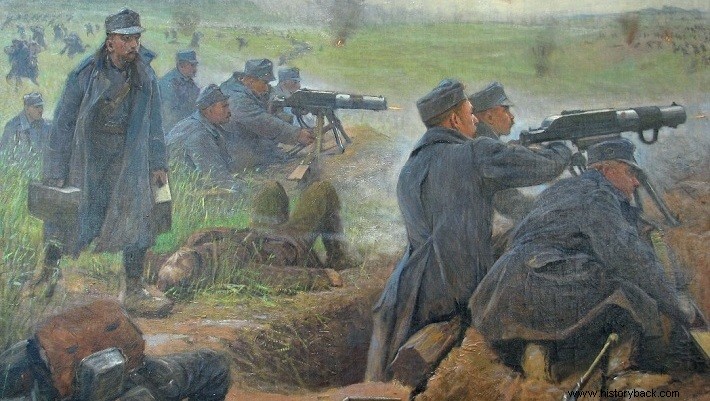
The Austrian Hoch und Deutschmeister Infantry Regiment is one of the oldest regiments in Europe. He fought from 1696 and honored his weapons until 1945, in all the battlefields where he operated. The constitution derives its origin from the Order of the Teutonic Knights, which was founded in 1190.
In 1696 Francis Ludwig, Count Palatinate and Duke of Nauberg and Grand Master of the Teutonic Knights, decided to form the Hoch und Deutschmeister infantry regiment which would participate in the war against the Ottomans.
The regiment was organized on the basis of the organizational chart of the Austrian Army. It had three battalions, each with four companies of musketeers – 12 companies in all – and two companies of grenadiers. The regiment joined the army of the famous Prince Eugene of Savoy and took part in the Battle of Zenda, where a huge Ottoman army was routed. The activity of the regiment in the wars against the French is not known and it is considered that it remained, as a guard, on the Hungarian front, against the Turks.
The constitution refers again to the operations against the Turks, in 1717-18. He was particularly distinguished during the occupation of Belgrade by the Turks. It served in the War of the Austrian Succession (1740-48), developing into one of the most elite units of the Habsburg Army.
During the Seven Years' War (1757-63) the regiment again distinguished itself in all the operations it took part in. In the Battle of Colin, in 1757, he contributed decisively to the defeat of the until then invincible Prussian Army of Frederick the Great.
From 1769 the Austrian regiments were numbered and the regiment received the name 4th Infantry Regiment Hoch und Deutschmeister (4th HuD, thanks to brevity) and honored for its action it assumed guard duties of the capital Vienna. Even descendants of the Habsburg imperial family joined the regiment. The regiment fought again against the Turks in 1788-90. He distinguished himself again in the battle of Belgrade, in 1788.
It was in the Wars of the French Revolution and the Napoleonic Wars that the regiment really made history, participating in more than 90 battles over a period of 23 years. After the final fall of Napoleon, the regiment marched in Paris, representing the Austro-Hungarian Empire, in the ceremonies for the allied victory.
In 1849 the regiment played a catalytic role in suppressing the Hungarian Revolution, under the command of the famous Marshal Radetzky. The regiment fought heroically even in the war against Prussia, in 1866, taking part in the great battle of Königratz. In 1904 the regimental band represented the Austro-Hungarian Empire in the USA at the great St. Louis International Exposition.
With the outbreak of World War I, the regiment was sent to the Eastern Front and fought heroically against the Russians, but suffered heavy losses. One of its commanders, Colonel Baron von Holshausen, was killed in action in 1915. The regiment remained on the Eastern Front until the Russian capitulation and was then sent to the Italian Front where it operated until the end of the war.
The regiment continued to serve in the Austrian Army after the fall of the monarchy. In 1938, after the annexation of Austria to Germany the regiment received the name 134th Infantry Regiment and joined the 44th Austrian Infantry Division of the German Army. He fought in Poland in 1939 and in France in 1940. He then trained to take part in the planned landing in England, which never took place.
He then participated in the attack against the Soviet Union. He took part in the great battle of Kiev, where more than 600,000 Soviet soldiers were captured. He participated in the great German offensive of 1942 that led the German Army to Stalingrad. In this battle, the 44th MP and the 134th Regiment were completely destroyed, after the encirclement of the German 6th Army, in this city.
The regiment was reorganized, after the destruction of Stalingrad and received the name 134th Grenadier Regiment and joined the reborn 44th Grenadier Division Hoch und Deutschmeister. The Division was sent to Italy and operated in Istria and South Tyrol, disarming the Italian forces.
In 1944 he was sent to Hungary, trying to stem the Soviet tide. He continued to fight until 1945, in southern Germany. The survivors of the regiment and division managed to move west and surrender to British and American forces.
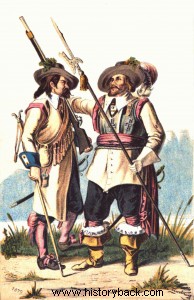
Officer and musketeer of the regiment in 1696.
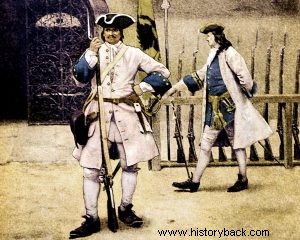
Officer and musketeer of the regiment in 1710.
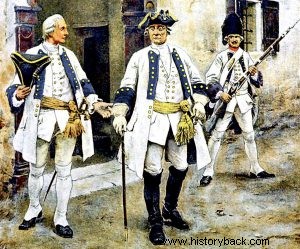
Officers and grenadiers of the regiment during the Seven Years' War (1756-63).
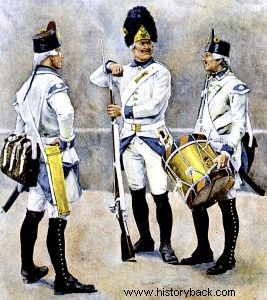
Grenadier and musicians of the regiment in uniforms that were in use between 1769 – 1798.
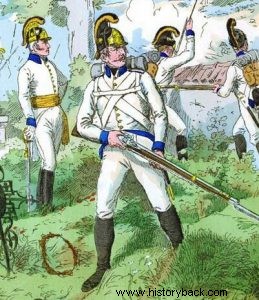
Officer and soldiers during the Napoleonic Wars.
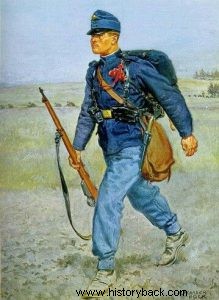
Rifleman of the regiment at the start of World War I.
